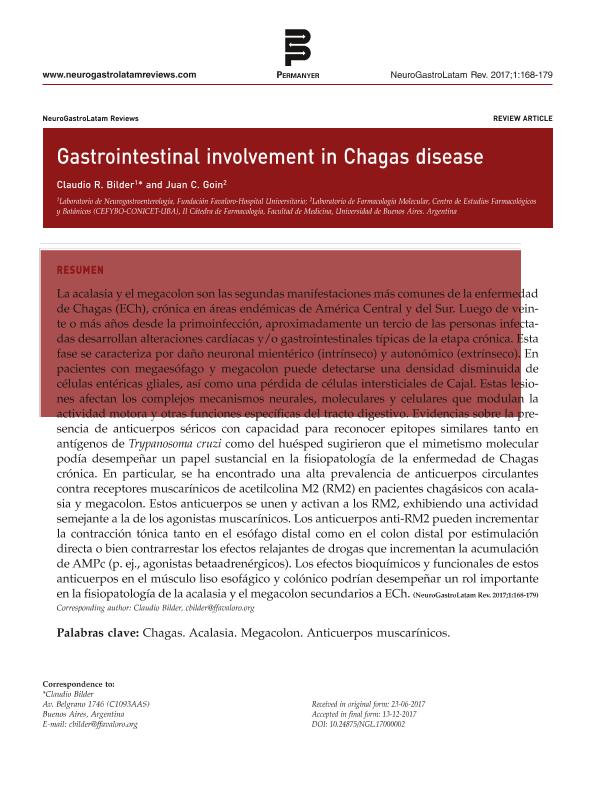Artículo
Gastrointestinal Involvement in Chagas Disease
Fecha de publicación:
12/2017
Editorial:
Permanyer
Revista:
NeuroGastroLATAM Reviews
ISSN:
2462-7011
Idioma:
Inglés
Tipo de recurso:
Artículo publicado
Clasificación temática:
Resumen
Achalasia and megacolon are the second most common manifestations of chronic Chagas disease (ChD) in endemic areas of Central and South America. Twenty or even more years after the initial infection, approximately one-third of infected people develop cardiac and/ or gastrointestinal abnormalities as typical chronic damages of ChD. The chronic phase of ChD is characterized by the damage of myenteric (intrinsic) and autonomic (extrinsic) neurons. A decreased density of enteric glial cells can be detected in patients with megaesophagus and megacolon and a loss of interstitial cells of Cajal in the latter patients. These lesions affect the complex mechanisms of neural, molecular, and cellular interactions that modulate the motor activity and other specific functions of the alimentary tract. Evidence for serum antibodies with the ability to recognize similar epitopes in both Trypanosoma cruzi and host antigens suggested that molecular mimicry could play a substantial role in the pathophysiology of chronic ChD. In fact, a high prevalence of circulating antibodies against M2 acetylcholine muscarinic receptor (M2R) in ChD patients with achalasia and megacolon has been found. These antibodies bind to and activate M2R, exhibiting agonist-like activity. Anti-M2R antibodies can both enhance tonic contraction in lower esophagus and distal colon by direct stimulation and also by counteracting the relaxant effect of drugs that increase cAMP accumulation (i.e. beta-adrenergic agonists). The biochemical and functional effects of these antibodies on esophageal and colon smooth muscle could play an important role in the pathophysiology of achalasia and megacolon secondary to ChD.
Palabras clave:
Chagas
,
Achalasia
,
Megacolon
,
Muscarinic Antibodies
Archivos asociados
Licencia
Identificadores
Colecciones
Articulos(CEFYBO)
Articulos de CENTRO DE ESTUDIOS FARMACOLOGICOS Y BOTANICOS
Articulos de CENTRO DE ESTUDIOS FARMACOLOGICOS Y BOTANICOS
Citación
Bilder, Claudio Rubén; Goin, Juan Carlos; Gastrointestinal Involvement in Chagas Disease; Permanyer; NeuroGastroLATAM Reviews; 1; 12-2017; 168-179
Compartir
Altmétricas




